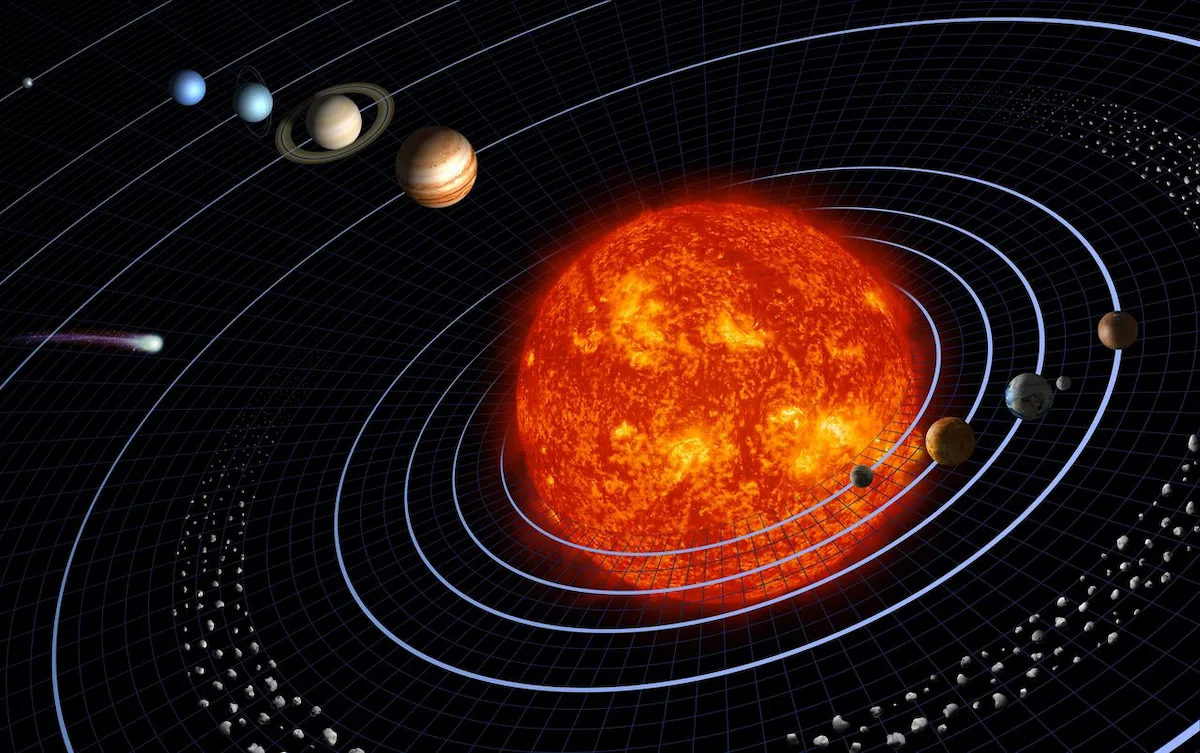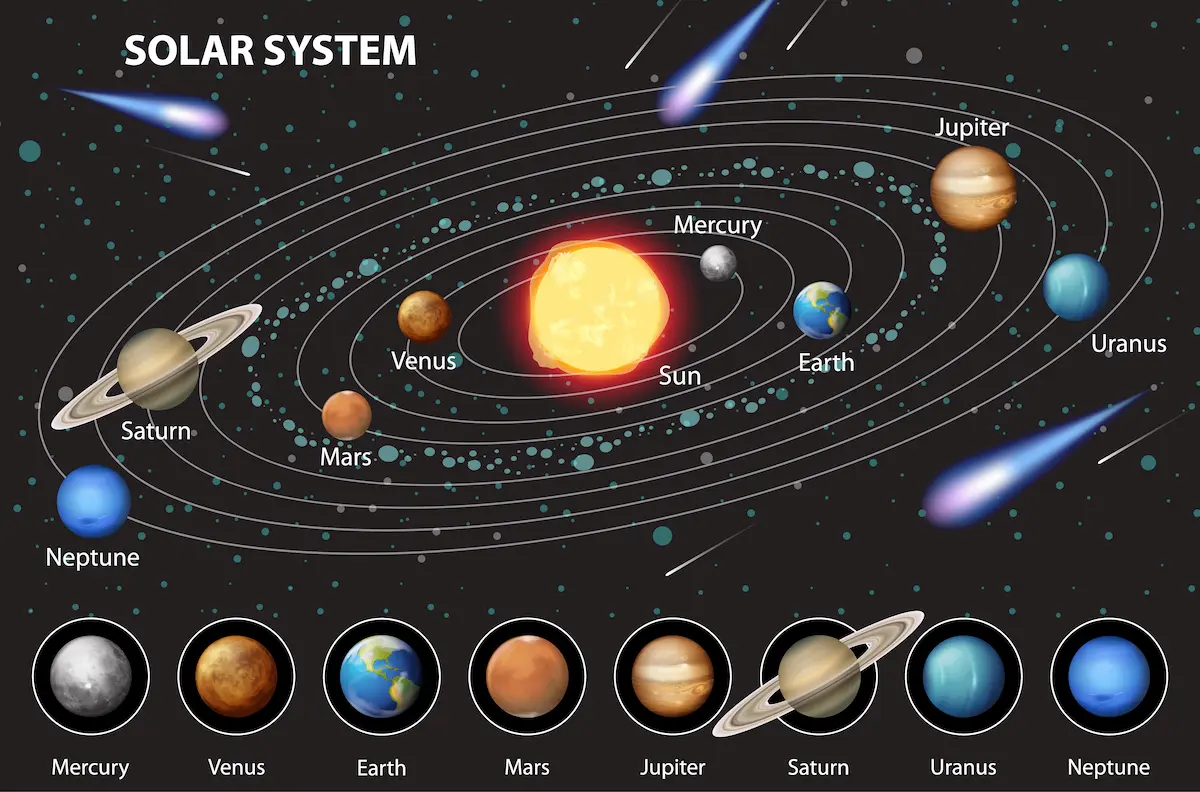How the Solar System Works?
Welcome to SolarSystemSimulation.com — your interactive guide to understanding how the solar system works! This website is designed to help students, teachers, and space enthusiasts of all ages explore the fascinating motion of the planets, moons, and other celestial bodies through a fun and educational solar system simulation.

What Is the Solar System?
The solar system is a collection of celestial bodies bound by gravity, with the Sun at the center. It includes eight planets, more than 200 known moons, countless asteroids, and icy comets. Everything moves in space, and understanding these movements helps us understand time, seasons, gravity, and the formation of worlds.

Why Do Planets Orbit the Sun?
The planets orbit the Sun because of gravity. The Sun is incredibly massive — about 99.8% of the total mass of the entire solar system. This mass gives it the gravitational pull needed to keep planets, moons, and other objects in orbit. Each planet follows an elliptical path around the Sun, taking a different amount of time to complete one full orbit. For example, Earth takes 365 days, while Neptune takes 165 years!
What Else Is in the Solar System?
Besides planets, the solar system is filled with interesting objects:
- Moons: Natural satellites like our Moon, or Jupiter’s 90+ moons.
- Asteroids: Rocky objects, mostly in the asteroid belt between Mars and Jupiter.
- Comets: Icy objects with tails that glow when they approach the Sun.
- Dwarf planets: Smaller planetary bodies like Pluto and Ceres.
How Gravity Keeps the Solar System Moving
Gravity acts like an invisible glue, pulling objects toward each other. The Sun’s gravity keeps all planets and moons in motion, creating a balanced system where everything spins and orbits in a grand cosmic dance. Without gravity, the solar system wouldn’t exist as we know it.
Explore the Solar System in Real Time
Use our real-time solar system simulation to visualize orbits, planetary positions, and motions dynamically. It’s perfect for science homework, classroom demos, or just satisfying your space curiosity.
Click here to see the Solar System SimulationFun Facts About the Solar System
- The Sun is over 100 times wider than Earth.
- Jupiter has a storm larger than Earth called the Great Red Spot.
- Venus spins in the opposite direction compared to most planets.
- Uranus rotates on its side like a rolling ball.
- Comets come from regions far beyond Pluto called the Kuiper Belt and Oort Cloud.
Frequently Asked Questions (FAQs)
Q: What is the solar system made of?
A: The solar system consists of the Sun, eight planets, moons, asteroids, comets, dwarf planets, and interplanetary dust and gases.
Q: What makes planets orbit the Sun?
A: The Sun’s gravity pulls the planets toward it, but their forward momentum keeps them in orbit instead of falling in.
Q: How long does Earth take to orbit the Sun?
A: Earth completes one full orbit in 365.25 days, which forms the basis of a year.
Q: Can I see other planets without a telescope?
A: Yes! Venus, Mars, Jupiter, and Saturn are often visible to the naked eye at night.
Stay Curious, Stay Exploring!
SolarSystemSimulation.com is your window to the wonders of space. Dive into our simulation, share it with friends and classmates, and keep learning about the universe above us. The journey never ends!
How do you like this simulation?
Leave your thoughts below — we’d love to hear from you!